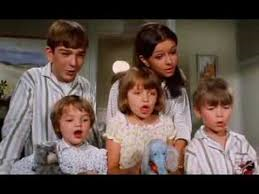Happy New Year 2019
It is the
end of the year and time, again, to look back on the year that has passed.
First, I
would like to thank those of you who read my blogs. I know you are not many,
but quality easily makes up for quantity and I am grateful for you being there
and love your comments. A very happy New Year to all of you!
This has
been an eventful year. I moved with my family from Israel, where I have been
living for the past 6 years, back to Denmark where I now live in Copenhagen.
That was a major transition and kept me busy for a large part of the year. I
have also been travelling quite a bit including a visit to The States in the
Easter break, Korea, China and many other places. Accordingly, I did not do as
many movies this year as I did in previous years.
The movie
count ticks in at just 55 movies, the lowest for a year so far. Of these 46 are
List movies and 9 are off-List movies. Last year I started a practice where I
choose three movies each year to review beyond the List. The idea was that
these should be my suggestions for the List, but over time this have changed to
simply movies I am curious to watch. I have to admit that the quality of those
movies has be varying and not all of them deserves one of those hallowed slots.
Lately I made the further addition that one of them should be Danish, but I am considering
dropping this requirement. The selection of Danish movies is generally not
interesting enough. I think going forward that I will check if there in a given
year is one deserving attention, otherwise I will pick internationally.
Of the List
movies I went from 1963 to 1966, which is probably not that impressive. There have
been great movies (The Good, the Bad and the Ugly, Repulsion, A Hard Day’s
Night) and utter crap (Vinyl, Mediteranee, Pierrot le Fou) and a lot in
between. I maintain that the List content of the sixties is not as interesting
as the fifties or forties, but there are enough pleasant surprises and quality
content to keep me going.
On the book
side I have done far better than expected. I have read and reviewed eight
books, which is way ahead of the five books I aim at. The books span a century
from The Trial of Persilles and Sigismunda from 1616 to Moll Flanders of 1722.
Compared to previous years the books I read this year have been consistently
good and interesting, which goes a long way to explain how I got this far. Also
books are good to bring along for long flights…
If I should
pick one for general recommendation it would be The Conquest of New Spain.
Besides being a singularly unique and captivating story, it is also based on
true events eye-witnessed by the author. I learned a lot reading that book and I
was thoroughly entertained.
It is also
telling that none of my 2018 reads will end on my crap list.
2019 looks
to be more of the same, except that I have no plans to move anywhere this year
so hopefully I will get to review a lot more movies and continue to read great
books.
If anybody
has suggestions for 1967 or 68 off-list entries do let me know, I am all ears.
Happy New
Year to all of you and may 2019 bring joy and prosperity and lots of great
movies.











